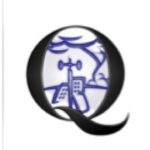NASA and NOAA announced today at the AMS Annual Meeting in New Orleans that they have renamed the recently launched polar orbiter, NPOESS preparatory project, the Suomi NPP, after the late Verner Suomi, who was one of the pioneers in creating instruments for satellite observations of the weather. AMS annually gives out a prestigious Verner Suomi Award for technological achievement–this year’s winner is Anne Thompson.
“Verner Suomi’s many scientific and engineering contributions were fundamental to our current ability to learn about Earth’s weather and climate from space,” says John Grunsfeld, associate administrator of NASA’s Science Mission Directorate. “Suomi NPP not only will extend more than four decades of NASA satellite observations of our planet, it also will usher in a new era of climate-change discovery and weather forecasting.”
Suomi, who died in 1995 at the age of 79, spent nearly his entire career at Univ. of Wisconsin. He is legendary for developing the spin-scan camera, which allowed satellites in stationary orbit of one point on Earth to maintain continuous focus and enable, among other capabilities, the instant-replay-style weather images we watch on television.
In 1968 he won the AMS’s highest award, the Rossby Medal
for his imagination, ingenuity, and versatility in conceiving and designing diverse meteorological sensors which have helped to transform the satellite as a meteorological probe from a dream to a reality. His Spin-Scan camera has given us our most comprehensive views of the atmosphere as an entity, and has already led to revised ideas concerning the circulation in lower latitudes.
and in 1977, he received the National Medal of Science — one of many awards — though his son Eric Suomi expects his father would have been particularly appreciative of Suomi NPP’s mission and new name.
The University of Wisconsin gathered comments on the name change:
“I think this is an excellent match,” says Eric Suomi, an electrical engineer who lives in Madison. “Had my father still been around, he would have been pushing for more of the kind of instruments on this satellite and the observations they’ll be making of our planet.”
“Vern flew the first experiment to look at the Earth from space on Explorer 7,” says Hank Revercomb, a Suomi collaborator and director of UW-Madison’sSpace Science and Engineering Center, which Suomi helped establish in 1965. “That was a radiation budget experiment, and there is actually a similar experiment, an instrument called ‘CERES,’ on the spacecraft they’ve named for him.”
Suomi NPP will also add to long-term climate records, monitor the health of the ozone layer, measure global ice cover and air pollution levels, map vegetation and — with the help of a sounder, an instrument conceived by Suomi and refined by Revercomb — contribute to better weather forecasts with sharper data on cloud cover, wind, temperature and atmospheric moisture.
“This satellite is designed to study the atmosphere and improve our understanding of how and why changes make a difference in our weather and climate,” Univ of Wisconsin Professor Steve Ackerman says. “Those were Day One objectives of Verner’s from the 1950s.”

